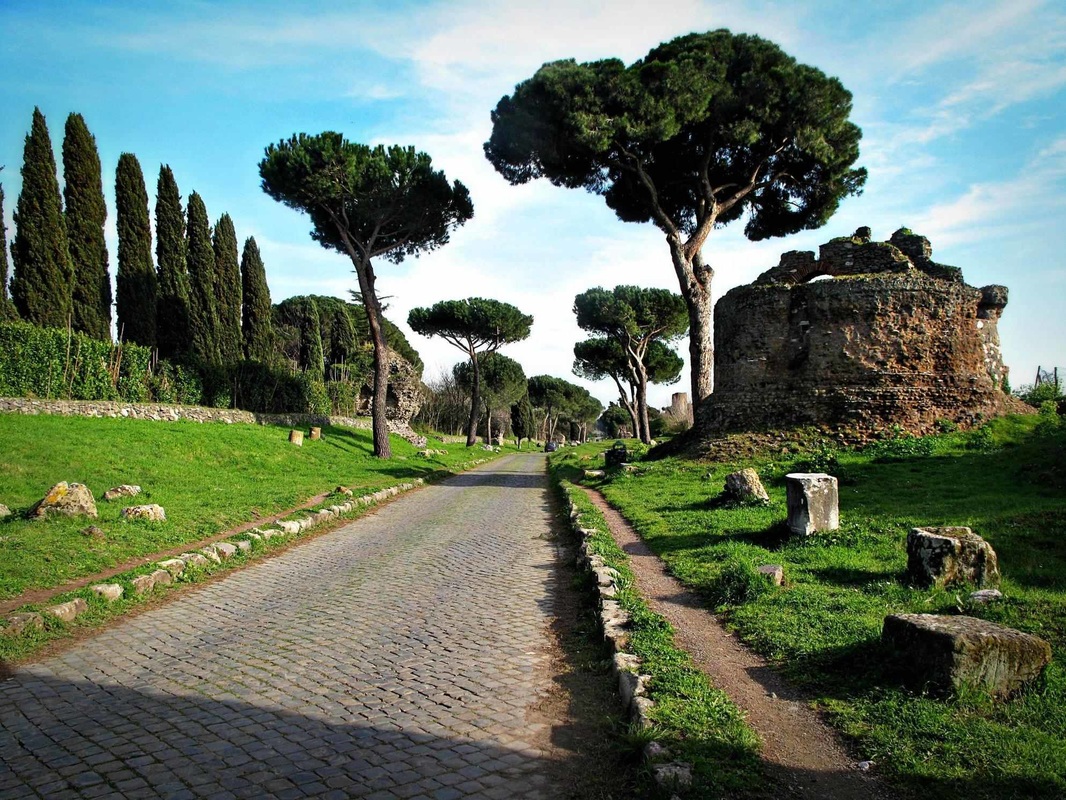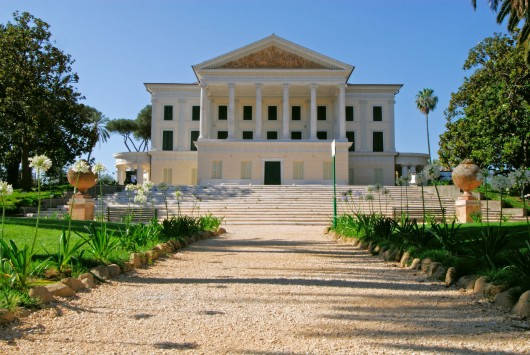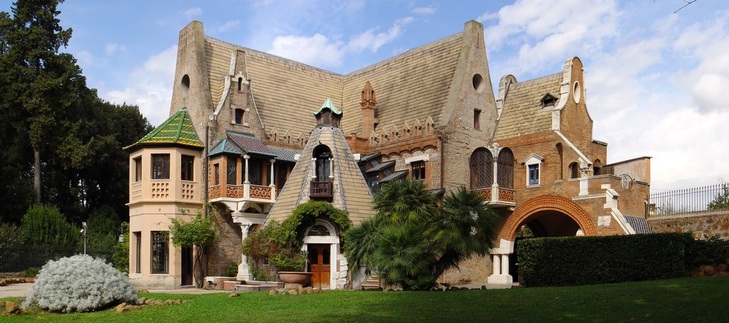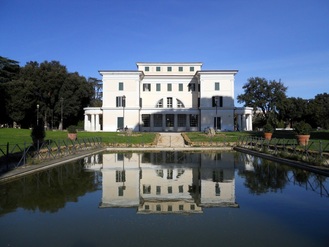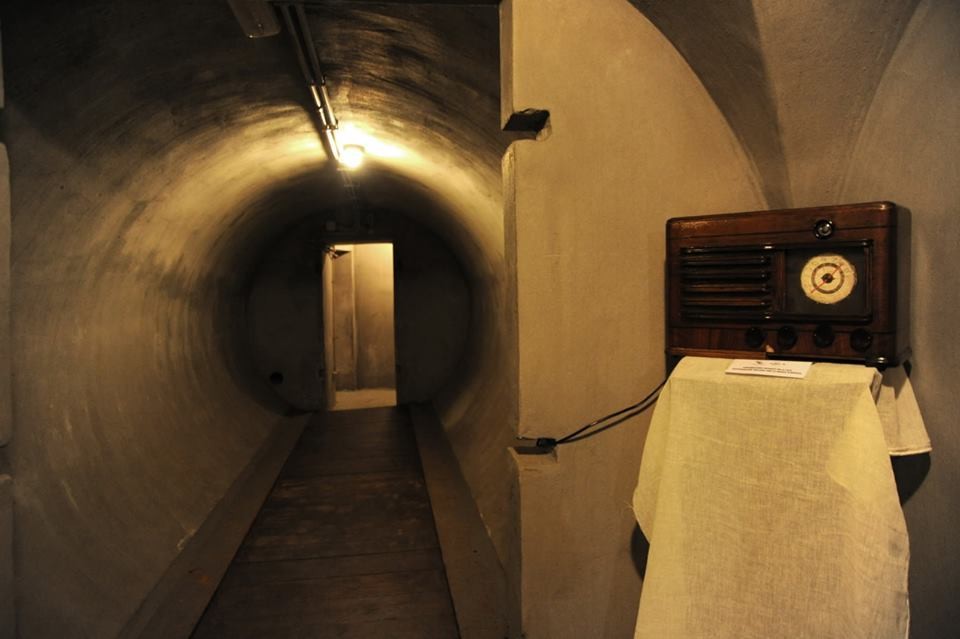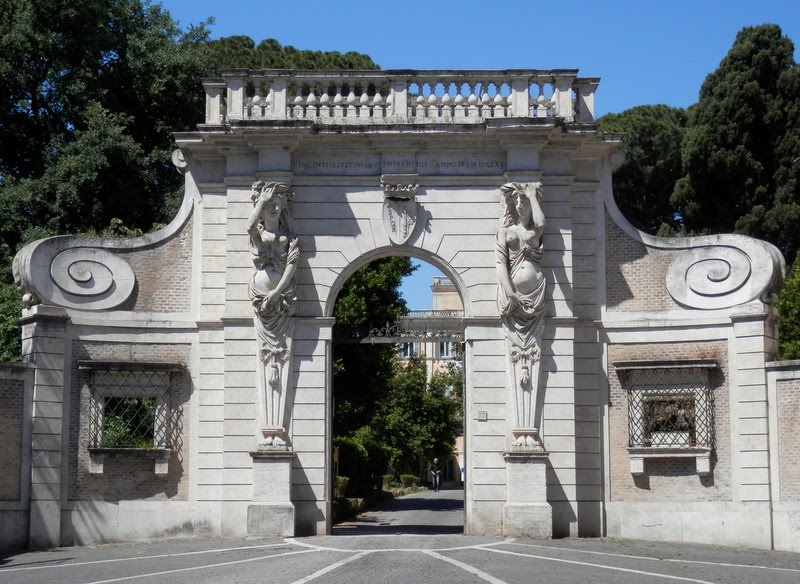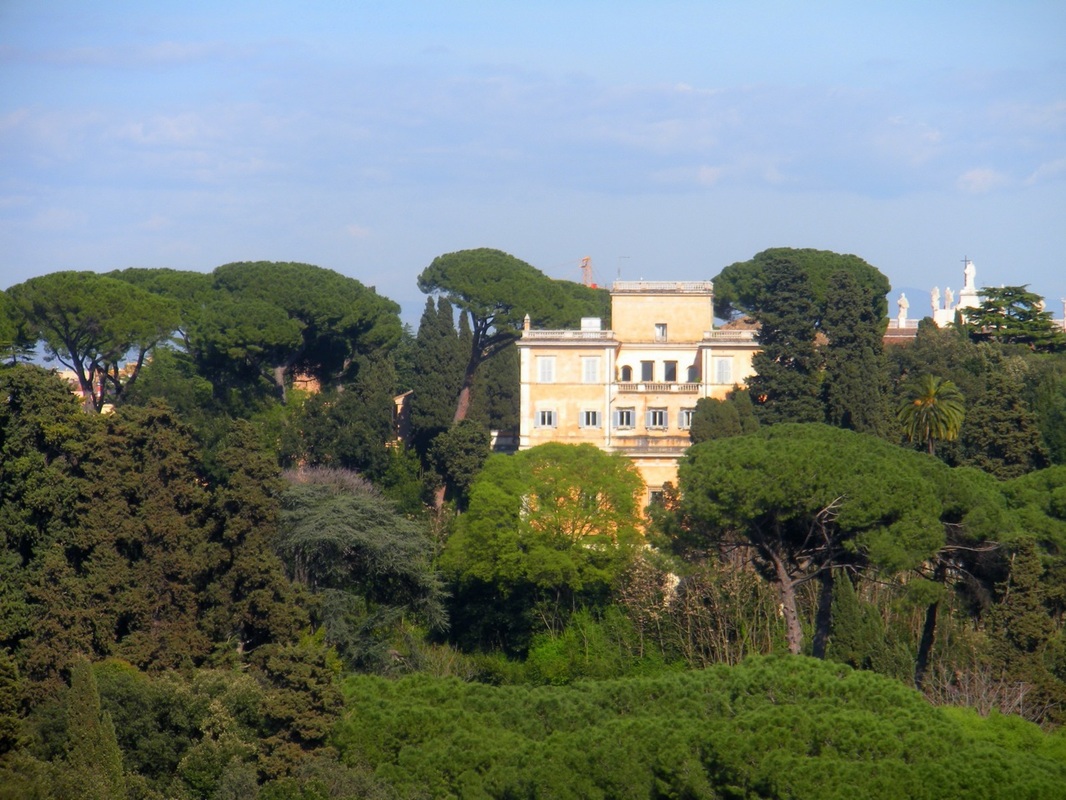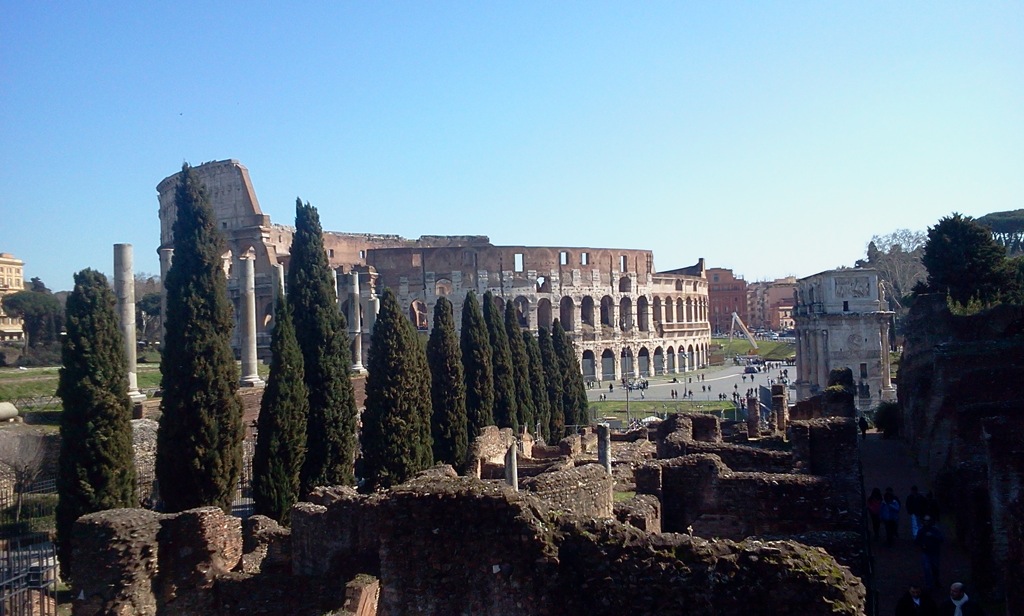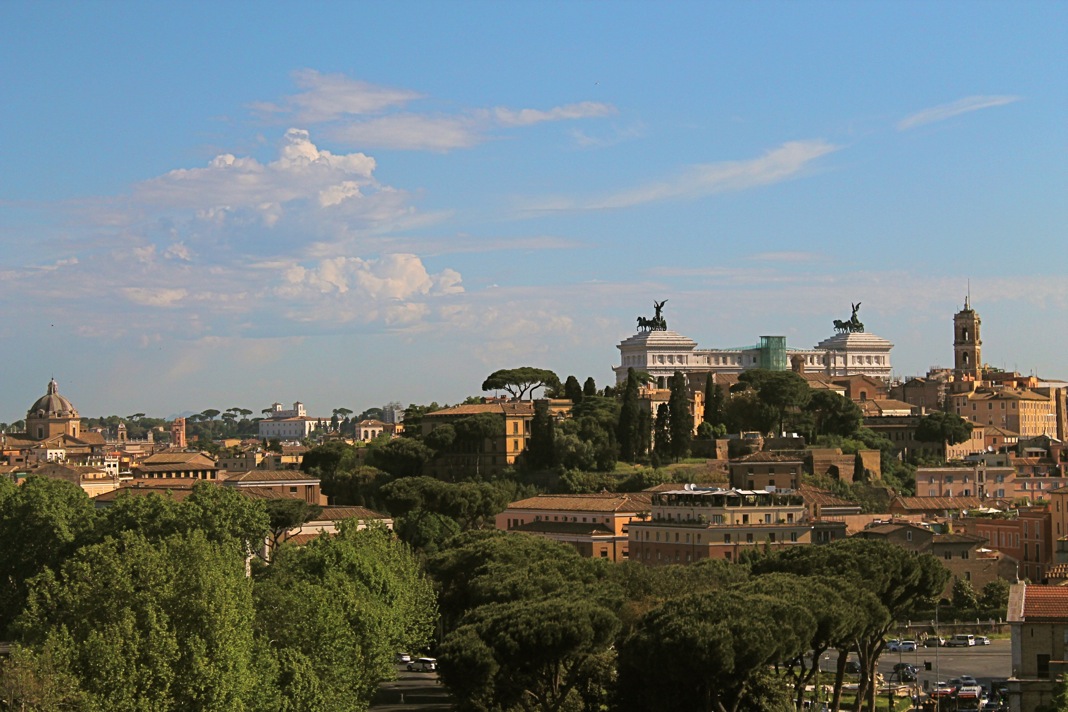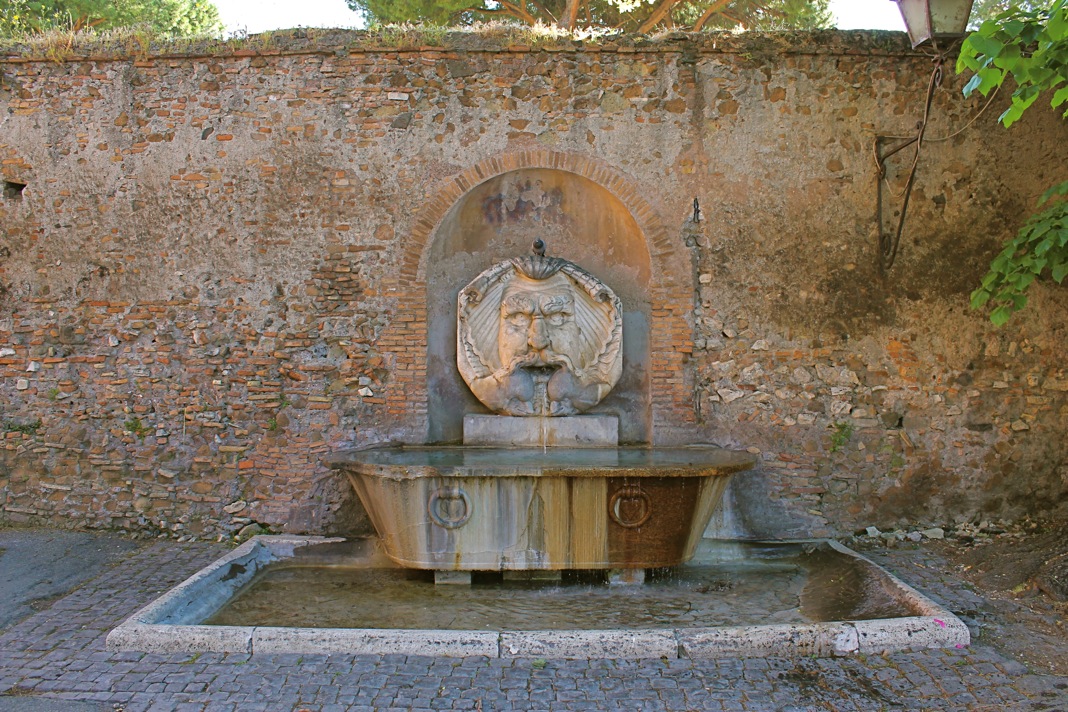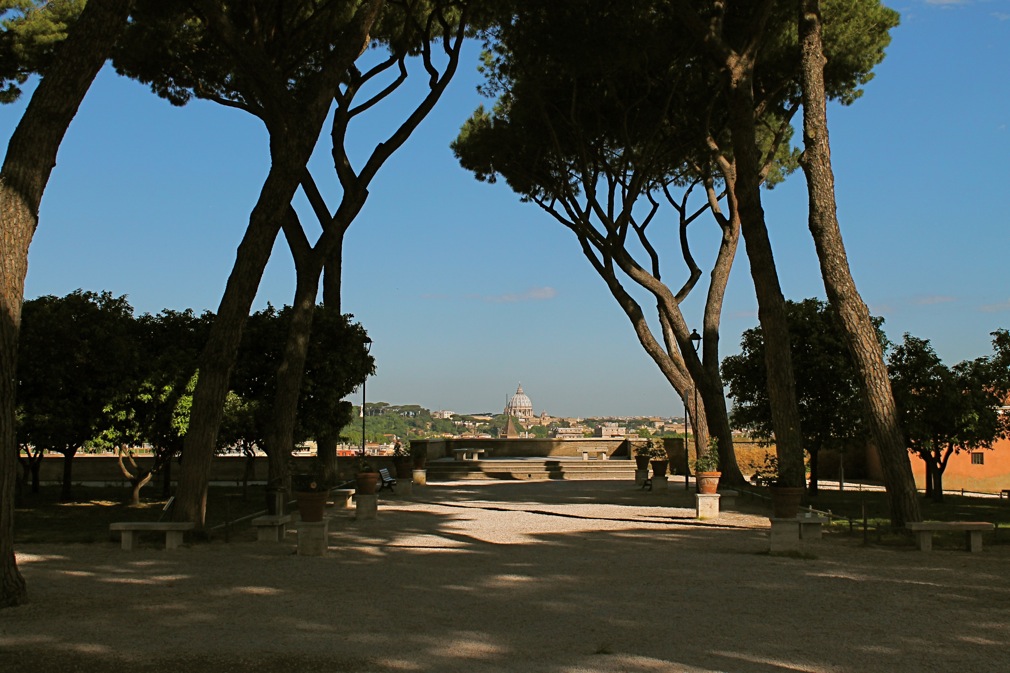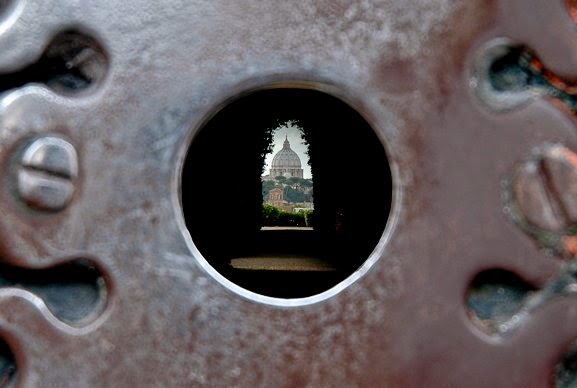Let’s continue our tour discovering some smaller and hidden green spots of the Eternal City!
1. Villa Torlonia - Where Nature Meets History and Art
This refreshing Oasis is located in the lively Nomentano Area, not far from the very interesting Coppede’ neighbourhood and from Porta Pia, one of the most famous gates of Rome. The villa belonged to the Torlonia family, Mussolini lived here, the Anglo-American troops used it as their headquarters until 1947 and after they left it was abandoned and neglected for over 30 years.
Since Rome authorities acquired the estate part of the buildings were restored and the park was open to the inhabitants and to the visitors. The persistent feeling you can experience when you walk through the many park’s paths is strictly connected with History and Art and we bet you will be exceptionally fascinated by the originality of its English-style garden (one of the few examples in the city), and to the unexpectedly large number of buildings and garden furniture in the grounds.
We suggest you to visit the villa or Casino Nobile and the intriguing Casina delle Civette (House Of The Owls), do not miss the eclectic False Ruins, The Temple Of Saturn and immerse yourself underground where an air-raid shelter was constructed with the intention of resisting both aerial bombardment and chemical warfare. Last but not least near the Casina you will find Technotown, where children are entertained by many interactive contents about Nature and History.
If you cannot resist without an Internet connection do not forget that there is a free Wi-fi all around the Park!
2. Villa Celimontana – The Peace A Couple Of Steps From The Colosseum
We are back in the heart of the City! The Villa Celimontana is located on the top of the Celio Hill in the south-eastern area of Rome, very close the Colosseum and the Forum and not very far from the Terme di Caracalla. This information should be enough to realize that the location is just amazing.
The Renaissance structure inside the Park represents a peaceful refuge in the Archaeological Area of Rome, and a rendezvous spot for all the jazz fans that are visiting the Villa during the international Jazz festival organized every summer. The Villa houses also the Italian Geographic Society, where some of the most important and antique maps of Italy are kept.
In the 16th Century the vineyard that was in the actual position of the Villa was acquired by the Mattei Family who transformed it into a villa in 1580, instructing the architect Giacomo Del Duca (a student of Michelangelo) to build the villa and the first garden scheme. The original villa has been much adapted, but was probably a single-floor structure with a portico along its facade, topped by a Doric frieze and balustrade, which still survive.
This is not a pretentious park but a good place to basking in the sun, or walk in love. You'll be surprised by the green parrots that have made their big nests here and the funny turtles leaving in the park fountains. If you are visiting the Colosseum and you want to escape for the chaos this is a very good spot!
.
3. Giardino Degli Aranci – An Unforgettable View With Orange Perfume
This beautiful garden scented with the perfume of oranges boasts one of the best views of the Roman Basilicas, rooftops, parks and ruins. Just grab a spot on the cute little terrace looking down over the Tiber River and watch the sunset over St. Peter’s Dome. This lovely little location is definitely one of the favourites among Romans. It’s the perfect place to steal a bacio or two. Though the oranges produce bitter fruit, they give a pleasant shady air to the garden, offering a lovely retreat from the bustle and noise of urban life. The park itself fits neatly behind the ancient Basilica of Santa Sabina, and beside the Piazza Pietro d'Illiria on the tranquil Aventino Hill just above the Circo Massimo. Do not be scared about the climb, you will be rewarded by a superb view. The scowling face of Giacomo Della Porta’s fountain, perhaps made in reference to Oceanus, a River god, greets visitors of this secluded square. Upon entering the Garden of Oranges, the ancient apse of the Basilica of Santa Sabina appears, while, on the opposite side, scanty remains of the old Savelli fortress, drawbridge and towers are visible. The garden was designed on a symmetrical plan, guiding visitors toward the central walkway leading to the terrace. A couple of steps forward and you will be rewarded by fantastic panorama of the Tevere, the ancient temples of the Forum Boarium, Santa Maria in Cosmedin (where the Mouth of Truth is located) the Gianicolo, and the imposing dome of St. Peter.
During the summer it is not surprising that the garden is used as a setting for theatrical productions, a favourite resting spot for visitors touring Rome and a quiet nest for lovers. The inspiring view is a great choice for love declarations!
Many people enjoy the sunset here and go back in the City center but it is worthy to go further up until Malta's Square, where there is a little secret to discover: it is the keyhole in the door of the Headquarter of the Knights of Malta. You will be delighted to admire the San Peters Basilica framed by the greenery of the garden which is perfectly in line with the hole. Just a case or made on purpose?
